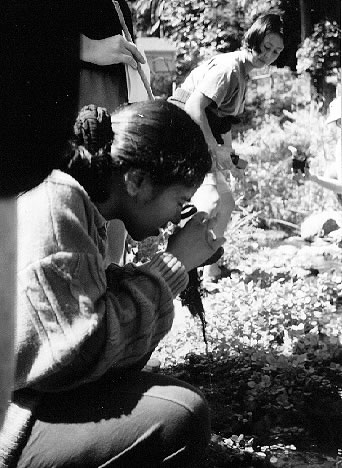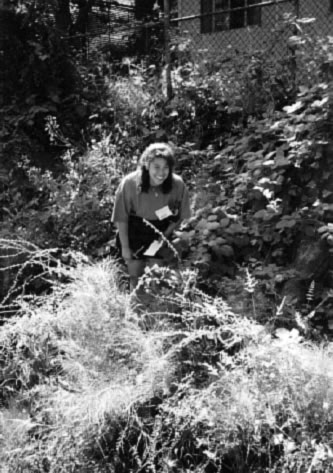LB1.1. Biodiversity Assessment
The “green patches” found in school gardens, city parks, backyards, and travel corridors are potential habitats for native species of plants and animals. In this activity, you will record evidence of species diversity for an urban habitat that has vegetation. Your habitat study will provide baseline information for developing a plan to improve the site for wildlife. Then you will create a Habitat Action Plan of practical steps that can be taken to increase the species diversity of your site.
What You Need:
- clip board, pencil, and paper for recording observations
- camera for documenting the site
- hand lens
- zipper lock plastic bags for collecting non-living samples
- pack of 3×5 cards for drawing or describing each species
- field guides to plants and animals of your area (optional)
- microscopes (optional)
Getting Started

- Choose a vegetated area within easy access of your home or school that shows human impact. If the area is large, select a study site that is under an acre in size.
- Write a brief description of the site, noting the following: date, time, location, physical characteristics, and major ground cover. Take photographs to document the vegetation and major features.
- Describe the extent of human impact.
- How much of the site is paved?
- How much of the site is covered by plants that have been planted by humans?
- How often do people visit the area, and what is their impact?
- Draw a map to scale showing the main features of your study site, including sources of water, and areas of cover for animals.

Investigating Biodiversity
- Observe your plot carefully using your sense of hearing as well as sight, because small birds and insects may reveal themselves by the sounds that they make.
- Look for indirect evidence of plants and animals, such as tracks, nests, seeds, droppings, and feathers.
- Draw or describe, on its own numbered 3″ x 5″ index card, every plant and animal species you discover. Don’t worry about names at this point; you can use field guides to identify species at a later time.
- Get down close to the ground to look for small creatures living in the leaf litter.
- You may want to use small plastic bags to collect non-living evidence such as fallen leaves and berries.
Preparing Your Baseline Summary
- Group your species cards into the following categories and record the numbers of each on your Site Inventory Coversheet: Plants, Fungi, Mammals, Birds, Reptiles, Amphibians, Fish, Insects, Non-insect invertebrates, Other.
- Highlight or color code the cards for species that you find out are native to the area. Use field guides and input from a local biologist to identify these natives. Estimate the total number of native species for your site.
- What plants and animals dominated the site (most numerous, greatest biomass)?
- Record on the map the locations of plants that provide important sources of food for animals.
- Write a one-page Baseline Summary of your results. Present your methods, data, and site descriptions.
Your Habitat Action Plan
1. Organize a binder or web page for your Habitat Action Plan that includes the following sections:
- Map(s) and Photographs of the Site
- Baseline Summary of Biodiversity
- Habitat Action Plan
- Appendices of Supporting Information:
- Site Inventory Cover Sheet
- Species Cards
- Descriptions of Human Impact
- Information from Scientists
2. Using your recent field experience much the way a conservation biologist would, compose a list of recommendations for improving the species diversity of the site.
3. Write a Habitat Action Plan that outlines your recommendations, including some easily implemented changes that could improve the site for native species.
4. Submit your Habitat Action Plan to a field biologist, such as a park naturalist, for his or her review.
5. Incorporate the feedback from scientists, then share your plan with others through a web page and/or articles and presentations to local newspapers, city planners, and local environmental organizations.
6. Search the Internet for biodiversity resources and habitat restoration programs that can help you network with others who share your interests and concerns.
7. Follow up on the interest you generate. The successful biodiversity restoration projects taking place in different areas of the world were started by small groups of concerned citizens.
Wildlife Habitat Restoration Web Site:
National Wildlife Federation
http://www.nwf.org
Download a Sample Coversheet for the Investigation


